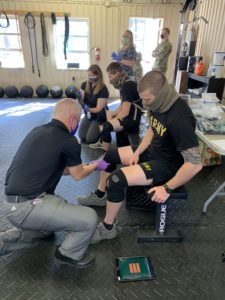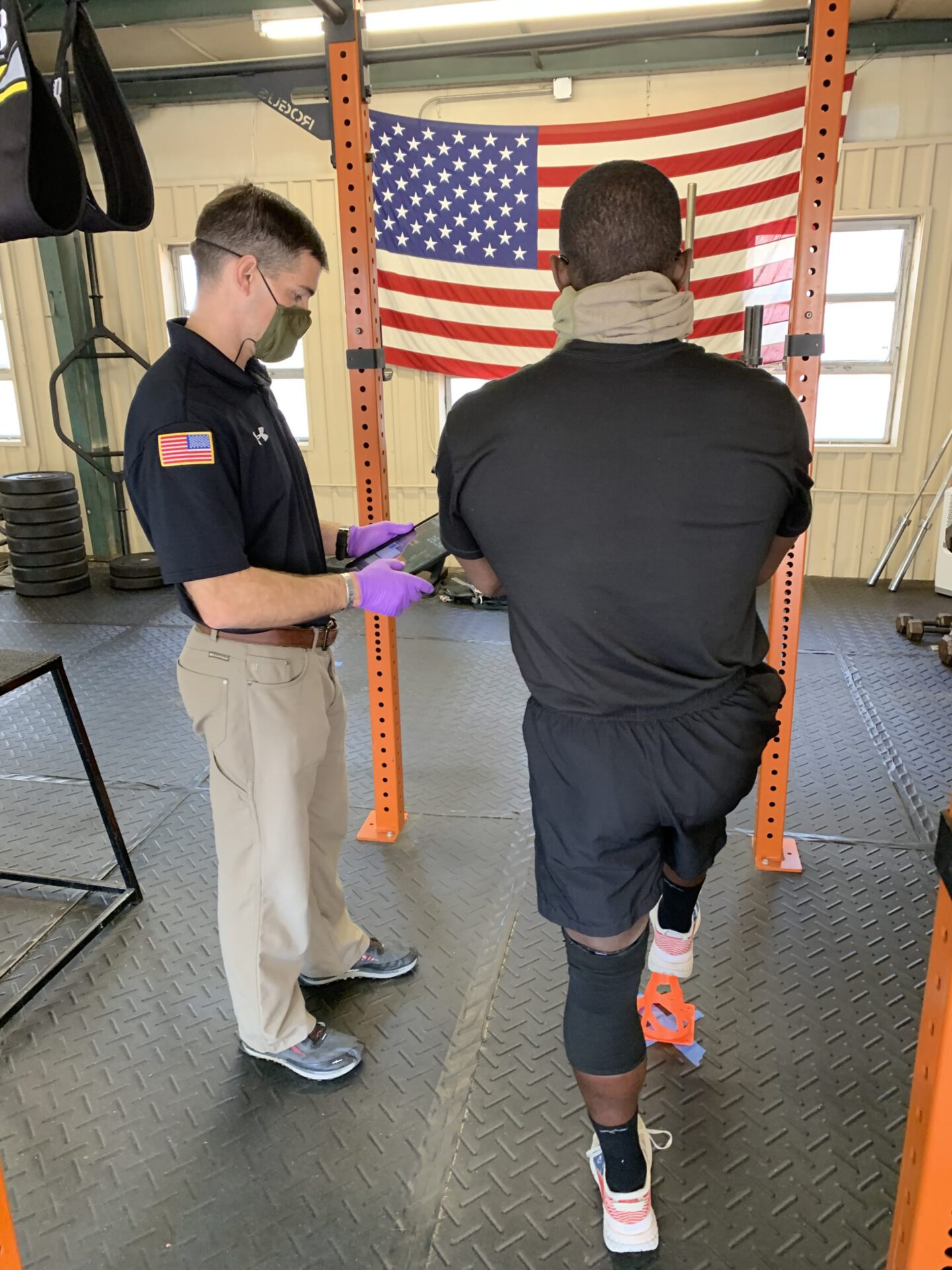15 June 2021
Collaborating with 82nd Airborne and WAMC to Help Prevent Knee Injuries
MIRROR researchers are learning how to predict knee injuries in the military using a novel mobile lower limb motion capture system.
Approximately 800,000 service members are affected by musculoskeletal injuries (MSI) every year which results in 25 million days of limited duty. MSI are a range of disorders involving muscles, bones, tendons, blood vessels, nerves, and other soft tissues. Examples include stress fractures, shin splints, tendinitis, back pain, and especially lower limb and knee injuries. MSI in the military has increased 1300% over a 24-year period between 1981 and 2005 which has grossly impacted the cost, care, and utilization within the Military Health System.
Since 2019, Geneva has worked with the Uniformed Services University to administer the Musculoskeletal Injury Rehabilitation Research for Operational Readiness (MIRROR) program to advance the treatment and preventive care for service members with non-combat related MSI and ultimately enhance overall military readiness and resilience.

Predicting Risk for MSI
A majority of MSI injuries affect the lower limb with 40% occurring at the knee which makes this the most common MSI. MIRROR researchers want to decrease the rate of injury by determining who is at risk for injury.
MIRROR Project 7 is focused on using body-worn sensors. The research collaboration includes Womack Army Medical Center (WAMC) who collects the data and the University of Miami Miller School of Medicine Department of Physical Therapy who developed a quick screening test using a novel mobile lower limb motion capture system (known as CaneSenseTM). This system may, with an 80-90% accuracy, predict the risk of injury in service members (based on previous work with Division 1 athletes).
Why the Airborne?
For this project, MIRROR is working with U.S Army paratroopers as their research patient population. On average, more than 50% of paratroopers sustain injuries each year with 37% accounting for knee injuries and 26% with ankle injuries.
Researchers are conducting a short questionnaire with paratroopers located at the 82nd Airborne Division based at Fort Bragg, NC. Using the CaneSense, each soldier will perform two tests: a single limb stance on left and right limbs for thirty seconds each and a 4-meter agility test repeated three times.
Watch this video to hear MAJ Helton, 82nd Airborne, explain how these tests are being performed.
Study Goals
At the conclusion of this study, researchers will have a system to determine the risk of injury for Soldiers entering the 82nd Airborne Division. Each Soldier will receive a classification: either low, moderate, or high risk of injury depending on their limb symmetry index (LSI%). LSI% is the percent difference of balance and agility capabilities between limbs.
With the prevention of injuries, these tests will also reduce the hours spent on training, lower the overall healthcare costs related to MSI, and improve the chances of success for military operations.
This program is fully funded by Defense Health Agency with no additional cost to the 82nd Airborne Division.
Disclaimer: The views expressed do not reflect the official policy of the Army, the Department of Defense, or the U.S. Government.

"At the conclusion of this study, researchers will have a system to determine the risk of injury for Soldiers entering the 82nd Airborne Division."
HIGHLIGHTS
- MSI in the military has increased 1300% over a 24-year period between 1981 and 2005 which has grossly impacted the cost, care, and utilization within the Military Health System.
- MIRROR researchers want to decrease the rate of injury by determining who is at risk for injury. For this project, MIRROR is working with U.S Army paratroopers as their research patient population because more than 50% of paratroopers sustain injuries each year with 37% accounting for knee injuries and 26% with ankle injuries.
- With the prevention of injuries, these tests will also reduce the hours spent on training, lower the overall healthcare costs related to MSI, and improve the chances of success for military operations.



